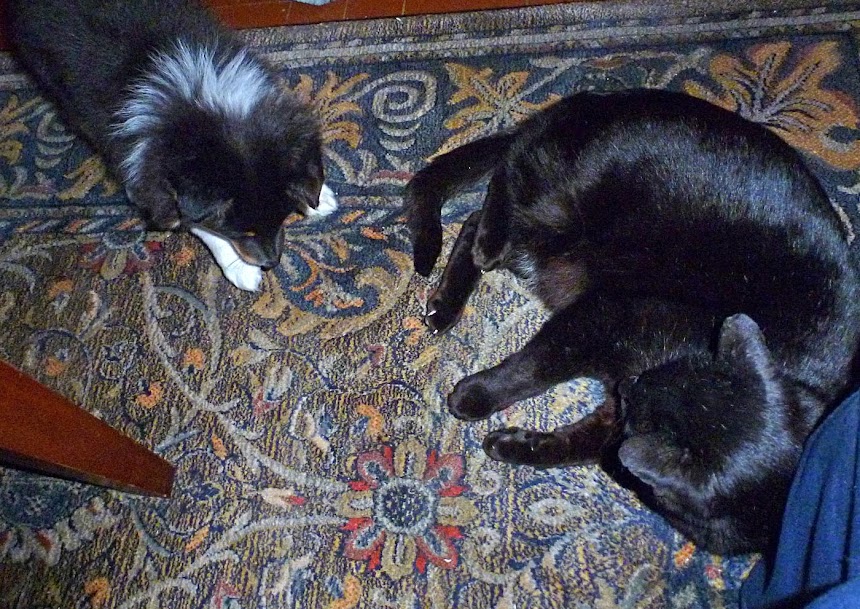One plant that doesn't mind the cold — in fact, it thrives on it — is Swiss chard. That's called bettes or blettes in French. I planted some in the garden in 2016. The icy January weather of 2017 didn't hurt it. Neither has the recent "black ice" — the hard spring freeze that has damaged vineyards and orchards all over France.
There are a dozen or so chard plants in our garden plot. They spent the winter out there. When you want to cook and eat some, all you have to do is go cut leaves from around the bottom of the plant (see below). You only choose the pretty, unblemished leaves for your dinner. The other ones go onto the compost pile.
In France people often cook the white ribs of the leaves separately from the green, leafy parts of the chard. The leafy parts can be cooked like spinach. The ribs might need to be peeled if they are thick and sturdy. They can be cooked and then made into a gratin with cheese and/or cream. When the leaves are tender like these, you can cook the ribs and the leaves together. Some Dijon mustard added to the cooking liquid gives the blettes a good flavor.
This second close-up photo shows the same plant as the one above it, but on a morning when the temperature had gone down below freezing. The leaves take on a glassy or waxy appearance, but they bounce right back as soon as temperatures climb back above freezing. Collard greens and kale are affected the same way by the cold. Freezing and thawing actually improves the flavor and texture of all these greens.

















































